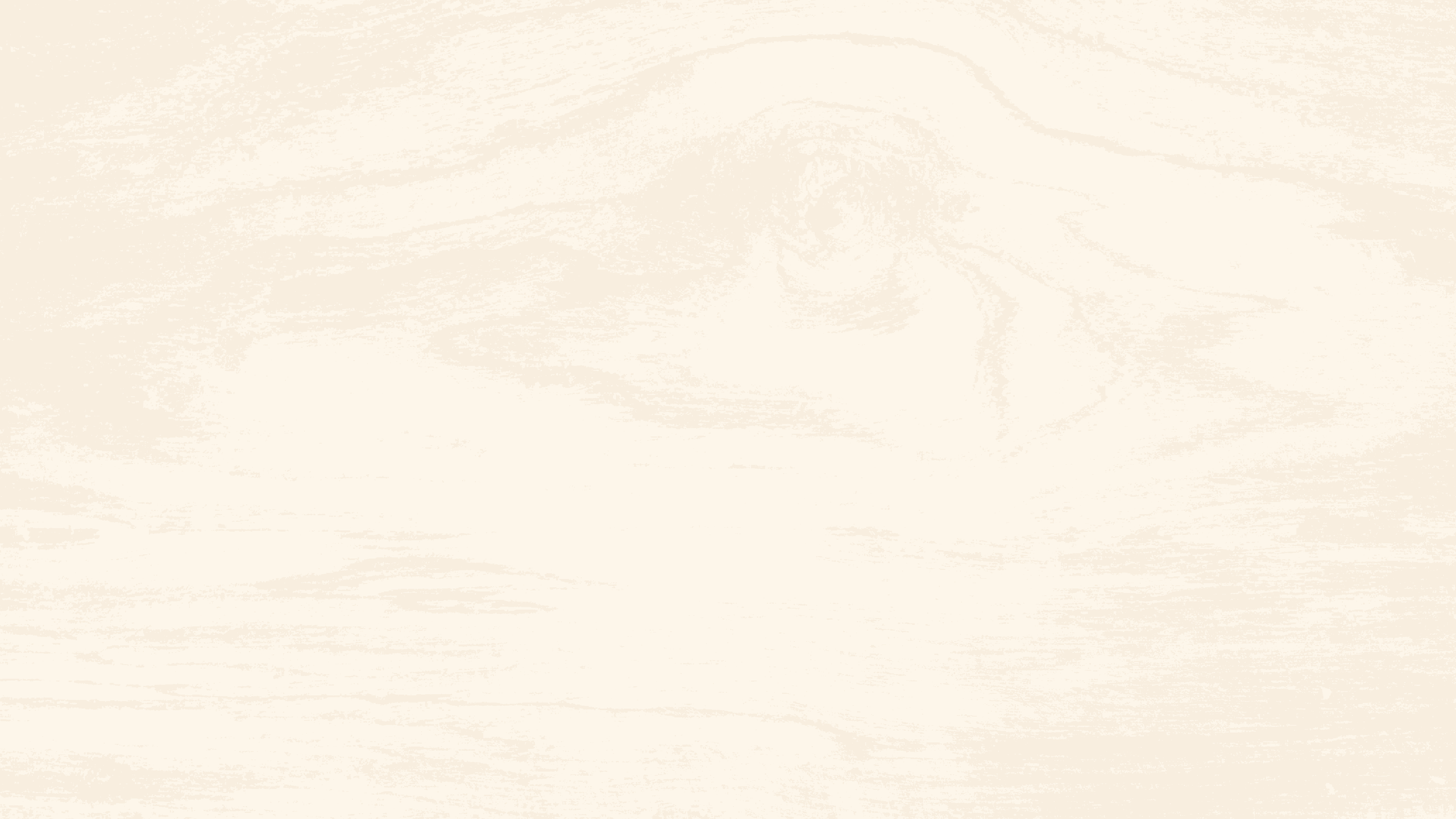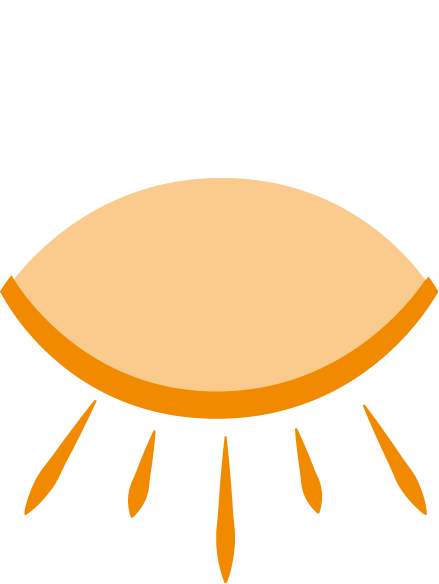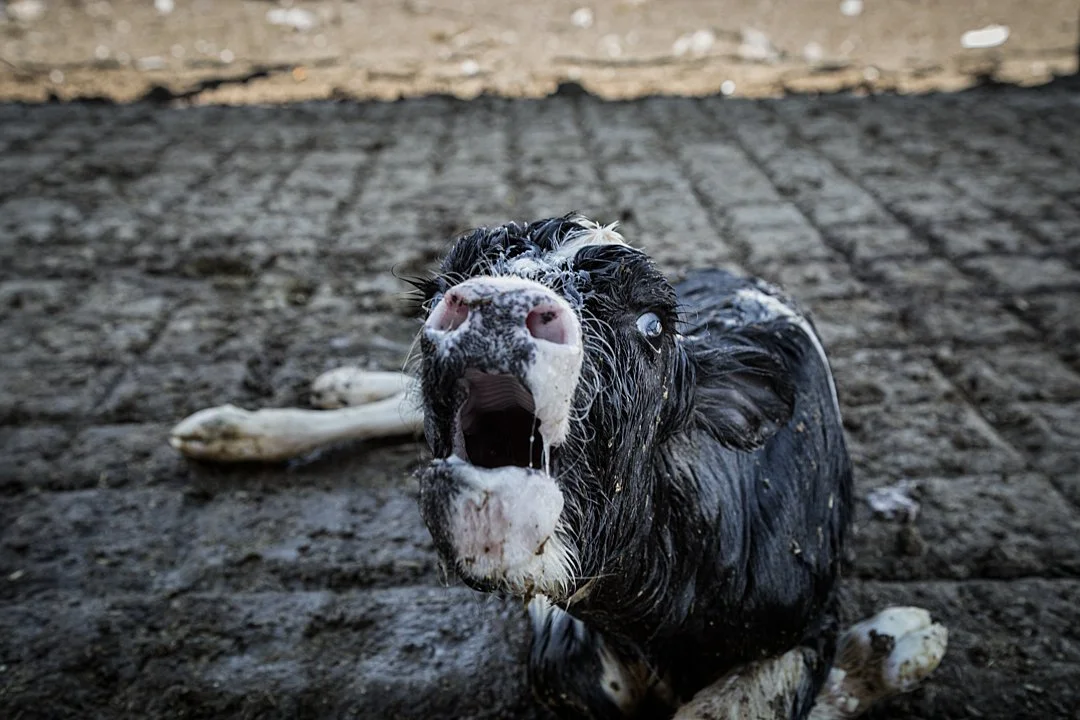
Education / The Bodhi Project / Cows
Cows in the Dairy Industry

Cows observing the dairy parlour, and jostling to enter the queue. Quebec, Canada, 2022. Jo-Anne McArthur / We Animals
Content warning: The following images may be disturbing.
Click to reveal them and open your eyes. Photos credit: We Animals
The Dairy Industry
The dairy industry, often seen as a harmless part of agriculture, is built on practices that result in significant suffering for cows, both physically and emotionally. At the heart of dairy production is the forced impregnation of female cows, who are repeatedly inseminated to maintain an unending cycle of pregnancy, lactation, and re-impregnation. This relentless cycle takes a severe toll on their bodies, but it is the emotional impact of the mother-child separation that is perhaps most disheartening - having been cited by many ex-dairy farmers as one of the main reasons for abandoning the industry. Central to the dairy industry is the practice of separating mothers from their newborn calves, typically within the first 24 hours after birth. The milk that would naturally be used to lovingly nourish the calf is instead harvested for human consumption.
Click the eye to reveal


A curious newborn male calf stares out from within his isolated and dirty enclosure at a veal farm. Here, he will spend the first weeks of his life locked up and alone in this pen where his movements are severely restricted. Israel, 2020. Omer Shoshan / We Animals
The Separation of Mothers and Calves
Cows, like humans, have a powerful maternal instinct. They carry their babies for 9 months, just like humans do, and the bond between mother and calf after birth is immediate and strong. The trauma of separation is deeply felt by both. Mothers are often heard calling out for their calves for up to days. In some cases, mothers have been observed attempting to follow or chase after the trailers carrying their calves away. To compound the situation, dairy cows are kept in a nearly continuous cycle of pregnancy, forced to endure the physical strain of calving each year, only to have their calves taken away shortly after birth again and again - never being allowed to fulfill their maternal instincts and raise their young.
This cycle, driven by our demand for milk, condemns both mother and calf to an existence marked by exploitation and profound distress.
Click the eye to reveal


A sunburned and blistered calf, housed in an open crate at a dairy farm, lies dead on the crate's bare grating. The tiny calf was fully exposed to unrelenting summer heat and succumbed to dehydration. Queensland, Australia, 2019. Bear Witness Australia / We Animals
The Discarding of Male Calves
Each year in the United States, hundreds of thousands of male calves, often called "bobby calves," are either sent to slaughter or killed on farms within the first week of life.
An estimated 500,000 male dairy calves are slaughtered annually in the U.S., with many of them being killed shortly after birth.
These calves are considered economically insignificant to the dairy industry, which primarily focuses on female cows for milk production.
Click the eye to reveal


Immediately after their birth on a dairy farm, this amniotic-fluid-soaked calf and their twin will be killed for being born too weak. Mexico, 2016. Dulce Ramirez / Animal Equality / We Animals
Rather than being fed their mother’s nutrient-rich milk, which is specifically designed to nourish them, bobby calves are typically given a substitute, such as a milk replacer. These artificial formulas are designed to provide the basic nutrition needed for growth, but they lack the antibodies and other immune-boosting properties found in natural mother’s milk. As a result, the calves are often deprived of essential nutrients and are more vulnerable to illness and disease. In some cases, they are fed a diet of low-quality grains, which is far from ideal for their developing bodies.
Click the eye to reveal


A calf born into the dairy industry stands separated from their mother and confined to an open and barren enclosure, which offers little protection from the elements. Queensland, Australia, 2019. Bear Witness Australia / We Animals
In mass production facilities, or so called CAFOs (concentrated animal feeding operations), bobby calves are often housed in cramped, barren conditions, isolated from other animals and denied the ability to form natural social bonds. In large-scale dairy operations, where efficiency is prioritized, the calves are frequently confined to small pens or hutches, with minimal space to move around or engage in natural behaviors. These facilities are designed to maximize profit and reduce costs, often at the expense of the calves' welfare. Many are kept in solitary confinement, without the comfort of their mother’s presence or warmth.
Click the eye to reveal


Milk leaks profusely from the udder of a cow on a dairy farm. Programs designed to maximize milk production cause their udders to grow abnormally large. Dairy cows like this individual may produce as much as 30 litres of milk daily. Torbali, Turkiye, 2022. Havva Zorlu / We Animals
Painful and Invasive Procedures
In addition to the emotional trauma, dairy cows are subjected to rough and aggressive handling by workers and a range of painful procedures, many of which are done without anesthesia. For example, disbudding—the removal or destruction of horn tissue in young calves—is a painful procedure that is usually performed without pain relief. For older cows, dehorning is equally distressing and carries a higher risk of infection. Many dairy cows also undergo tail docking, a painful procedure used to prevent tail injuries. Despite being banned in some regions, tail docking still occurs on many dairy farms, causing chronic pain and leaving cows unable to swat flies from their hindquarters.
Click the eye to reveal


A calf with a blood covered face stands inside an individual enclosure on a farm in Czechia. This young animal has recently undergone a painful dehorning procedure. Czechia, 2021. Lukas Vincour / Zvirata Nejíme / We Animals
The Physical Toll on Dairy Cows
The relentless demand for milk pushes dairy cows beyond their natural limits. Intensive breeding and feeding practices have led to a sharp increase in milk production, but this comes at a tremendous cost to the cows’ health. Many suffer from mastitis, a painful infection of the udder caused by over-milking, as well as lameness and hoof diseases from standing on hard, unsanitary floors in cramped conditions. Despite these physical afflictions, the cows are often tethered to milking machines for extended periods, placing constant strain on their bodies.
This exploitation leads to a drastically shortened lifespan: while a cow could live for 20 years or more in natural conditions, most dairy cows are sent to slaughter once their milk production declines, often under brutal conditions, where they face horrific deaths after only a few years of life.
Click the eye to reveal


A row of cows being milked in a modern dairy parlour. Canada has no legal requirement for dairy cows to be allowed outside, and as farms consolidate and grow in size, cows are often kept indoors year-round. Quebec, Canada, 2022. Jo-Anne McArthur / We Animals

The Ethics of Dairy Production
from a Buddhist Lens
From a Buddhist perspective, the suffering inflicted on these cows violates the core teachings of non-harming (ahimsa) and compassion (karuna). The First Precept encourages us to abstain from killing or causing harm to sentient beings, yet the practices within the dairy industry directly contradict this ideal. The forced insemination of cows, the separation of mothers from their calves, and the cruel physical conditions that lead to sickness and early death all contribute to immense suffering. These acts exemplify a disregard for the inherent worth of sentient beings, reducing them to mere commodities for human consumption.
The Second Precept, which teaches us to abstain from stealing or taking what is not freely given, can be powerfully applied to the dairy industry. The milk cows produce is biologically intended for their calves, to nurture and sustain them. However, both the mother’s milk and her calf are taken for human consumption, often with complete disregard for the well-being, dignity, or autonomy of the animals involved. The forced separation of mothers and calves, coupled with the manipulation of cows' reproductive cycles to maximize milk production, represents a profound form of exploitation and a violation of their natural rights. For many compassionate individuals, this issue also raises important feminist concerns about the oppression and control of female bodies in agriculture.
Mindful Consumption and Compassionate Choices
The practice of compassion (karuna) and loving-kindness (metta) is at the heart of Buddhist teachings. True compassion involves not only understanding the suffering of others but actively working to alleviate it. The immense suffering endured by dairy cows calls for a compassionate response. Rather than perpetuating harm, Buddhism encourages us to make choices that minimize suffering and promote the welfare of all sentient beings. By choosing alternatives to factory-farmed dairy products, we align our actions with the values of compassion and mindfulness.
In addition, the principle of Right Livelihood (samma ajiva) underscores the importance of earning a living in ways that do not cause harm to others or the environment. The dairy industry, particularly its industrial practices, supports a livelihood based on exploitation and suffering. By working in industries that perpetuate harm, or by consuming animal products that come from these industries, we violate the spirit of Right Livelihood, which calls for ethical and compassionate ways of living and working.
Jon and Tracey Stewart with their children Nathan and Maggie, spending time with rescued animals at Farm Sanctuary's New York shelter. Farm Sanctuary, Watkins Glen, New York, USA, 2015. Jo-Anne McArthur / We Animals
Conclusion
In conclusion, the dairy industry is a clear example of practices that conflict with the ethical principles of Buddhism. The forced insemination of female species and it’s disregard for autonomy over their own bodies, the painful procedures and breeding inflicted on them, the severance of family ties and the killing of calves and taking of the milk intended for them to be used for humans, as well as the early slaughter of “spent” cows represent significant suffering that is directly at odds with the core Buddhist teachings of non-harming, compassion, and respect for all sentient beings. By recognizing the ethical implications of our choices, we can work toward a more compassionate, mindful way of living that reflects the interconnectedness of all life and alleviates the suffering of animals. The Five Precepts offer a valuable framework for understanding how our consumption choices affect the lives of animals and guide us toward more ethical and compassionate actions.







